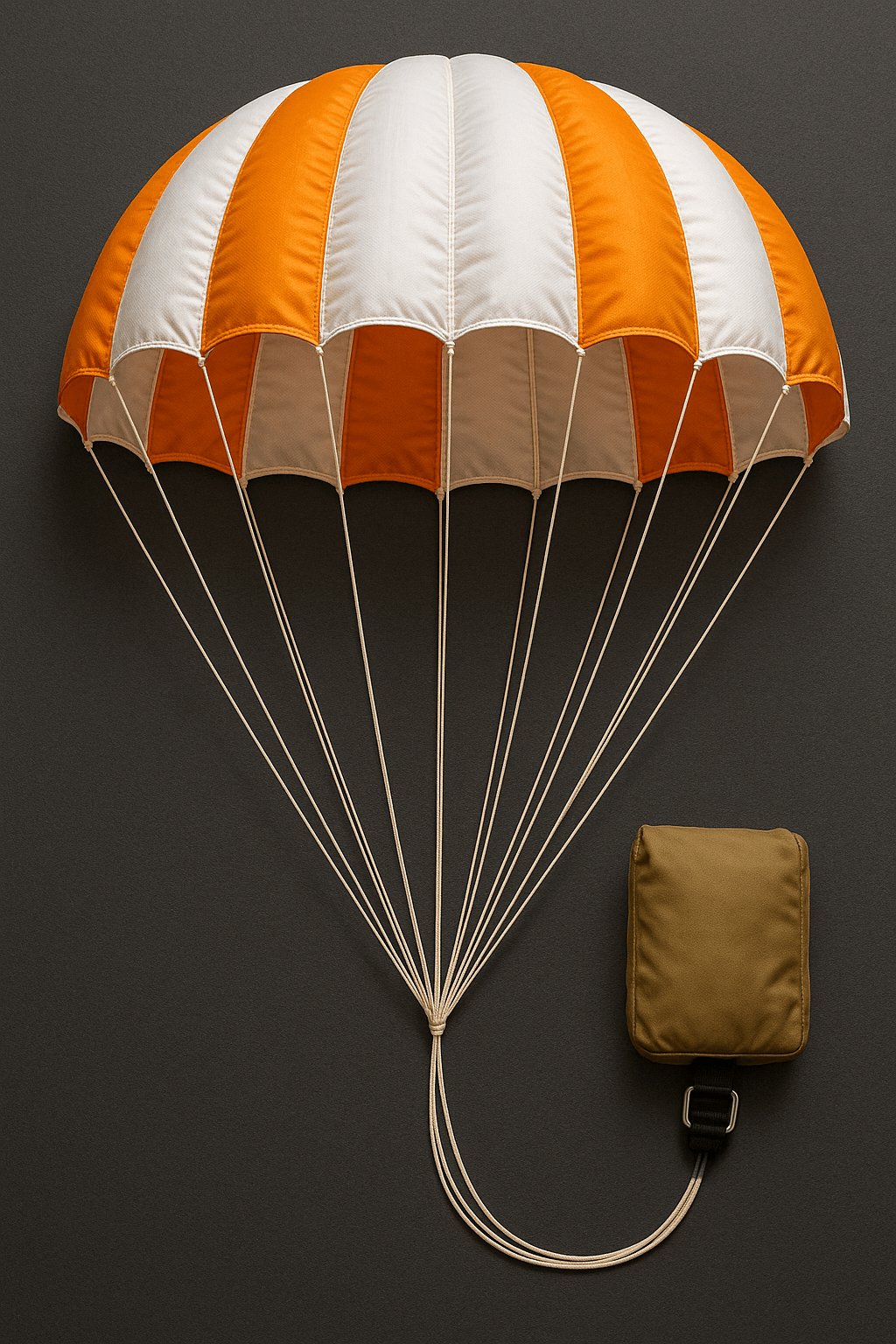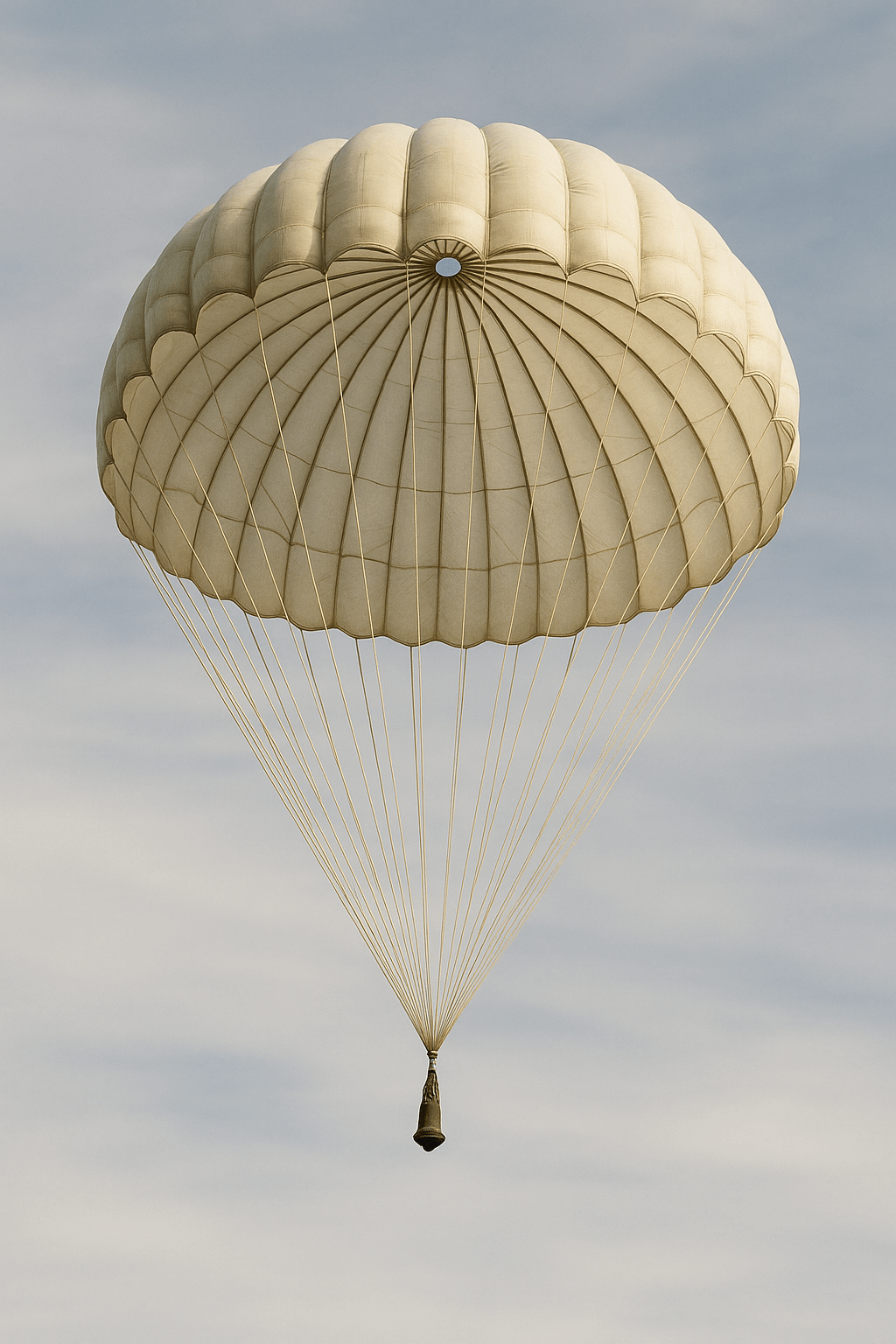Customs Clearance of Parachutes in Iran (HS Code + Documents & Permits)

For estimating the time and cost of parachute customs clearance, contact the experts at Saba Tarkhis.
Instant Free Consultation1) Importance of Parachutes and Their Broad Applications
Military: Parachutes are used in airborne and military operations to deploy personnel and equipment into operational areas. They enable troops to access hard-to-reach locations without the need for airport infrastructure.
Aerospace: In aerospace, parachutes play a crucial role in the safe landing of space capsules, satellites, and other sensitive equipment—especially important for re-entry and recovery missions.
Air Sports: In activities such as skydiving and BASE jumping, parachutes are the primary device for athletes’ safe landing. The emphasis on safety means parachutes used here must comply with stringent standards.
Emergency Rescue: In emergencies such as aircraft failures, parachutes are the last resort to save passengers’ lives. Their presence on flights is mandatory and they must meet high safety standards.
2) Technical Details & Key Points in Parachute Customs Clearance
1. Customs Tariff (HS Code)
The HS Code for parachutes is classified under 63079090. This tariff item falls within “other textile articles for industrial and safety applications” and is a key tool in customs processing.
Why the HS Code matters:
Determining duties & taxes: the code plays a major role in calculating import duties and taxes. Each product, per its tariff line, is subject to specific regulations that directly affect import costs.
Correct product classification: the HS Code helps customs and regulatory bodies accurately classify and identify goods, informing clearance decisions accordingly.
Technical & safety requirements: the code is also linked to technical requirements, safety standards, and sanitary rules that are mandatory for importing parachutes.
2. Required Permits & Certifications
International certifications: Imports must comply with recognized international standards. Key certifications include:
ISO 9001: Relates to quality management and ensures parachutes are manufactured under internationally standardized processes.
CE Marking: Confirms compliance with European Union safety, health, and environmental requirements.
TÜV Certifications: Especially relevant for safety and military equipment, indicating high product quality and safety.
National permits: Beyond international certifications, approvals from domestic authorities are also mandatory:
Ministry of Defense & Armed Forces Logistics: Due to the military/safety nature, imports require MoD authorization.
Civil Aviation Organization of Iran: If parachutes are for aviation use, a permit from this authority is required.
3. Quality Control & Standards Compliance
ASTM International Standards: specifications on materials and performance, including tensile strength tests, fabric durability, and deployment mechanism efficiency.
EN Standards (Norme Européenne): European requirements defining safety and aerial rescue equipment criteria. Compliance is essential for EU markets and also relevant for imports to Iran.
MIL Standards (Military Standards): specific to military equipment, ensuring reliable performance under harsh operational conditions.
Customs quality-control process:
Technical inspections: customs may perform thorough technical inspections to ensure quality, including document reviews and tests to confirm declared standards.
Field evaluations: some tests may be conducted in the field, particularly where fabric quality, mechanism robustness, and other technical characteristics must be verified.
4. Technical Tests & Specialist Assessments
Performance tests in varying conditions: Trials in different weather (strong winds, rain, high/low temperatures) to ensure proper operation under all environmental conditions.
Shock & impact tests: Designed to assess resistance to sudden impacts and shocks, indicating the quality of materials and mechanisms used.
Durability & lifespan tests: Assessing service life through abrasion and wear resistance to evaluate suitability for repeated, long-term use.
3) Documents Required for Parachute Customs Clearance
1. Order Registration
Order Registration in the “NTSW” Trade System: The first step in the import process where product and buyer information is officially recorded.
2. Transport Documents
Cargo Insurance Policy: Confirms that the goods are insured during transit.
Packing List: Provides packaging details and unit counts per package.
3. Permits & Certificates
National permits: Approvals from the Ministry of Defense & Armed Forces Logistics and the Civil Aviation Organization.
Certificate of Inspection (COI): In some cases, the goods must be inspected and approved by competent bodies before shipment.
4. Financial Documents
Certificate of Origin: Confirms the country where the goods were produced and exported.
Proof of Duty/Tax Payment: Shows full payment of customs duties and related taxes.
5. Quality-Control Documents
6. Other Complementary Documents
Customs Clearance Certificate: Issued by customs after completion of all procedures and payments.
Electronic Confirmations from Supervisory Systems: Such as the order-registration confirmation from the national trade system. These documents must be prepared meticulously to ensure a smooth clearance process with no delays. Working with experienced customs brokers can be highly effective in preparing and submitting these documents.
4) Import & Export Conditions for Parachutes
5) Trade Volume of Parachutes
6) Best Practices for Customs Clearance of Parachutes
| Item | Short Description | HS Code |
|---|---|---|
| Parachute | Safety/aviation equipment; technical fabric & deployment system | 63079090 |
Final tariff line depends on use case, technical documents, material composition, and standard certificates. (Additional note: in some cases, Chapter 88 may also be examined.)
Need precise HS Code classification, permits, and document preparation? Our team manages the process end-to-end.
Request a Proforma Quote
Frequently Asked Questions
What is the HS Code for parachutes?
According to this brief, parachutes are declared under 63079090; the final determination depends on technical documents and intended use, and in some procedures Chapter 88 may be reviewed.
What permits are required for import?
Case-by-case: authorization from the Ministry of Defense for items with military/safety nature and a permit from the Civil Aviation Organization for aviation items; plus international certificates like ISO/CE/TÜV.
What are the quality and standard requirements?
Compliance with ASTM (strength/durability), European EN safety standards, and for military items MIL-STD; performance, shock, and durability test reports, plus COI/COC documentation, are required.
Premium Customs Services by Saba Brokerage
Saba Brokerage is one of Iran’s most reputable, professional companies in customs clearance. The company provides specialized services for clearing all kinds of goods—including parachutes—such as:
Specialized consulting: An experienced advisory team with deep knowledge of customs regulations and import/export laws helps you choose the best strategies. This includes a thorough review of all clearance steps and expert recommendations to accelerate import procedures.
Document preparation: All documents and permits needed for customs clearance—such as standard certificates and import authorizations—are prepared by specialists, ensuring everything is ready correctly and on time.
Continuous follow-up: We continuously track your case in customs and handle all administrative steps to speed up clearance. Accurate follow-ups and coordination with relevant bodies prevent delays.
Optimization solutions: Based on analysis, we recommend the best ways to optimize costs and reduce clearance time, including transport method choices, customs cost management, and leveraging available options to shorten waiting times.
Transportation: Coordinating and managing transport from customs to the final destination using the best methods and with professional safety standards. You can be assured your goods will reach their destination safely and in full compliance.
By choosing these services, you can trust that your import clearance will be handled professionally and in full compliance with all required regulations and standards, ensuring your goods reach their final destination without issues.
.png)
